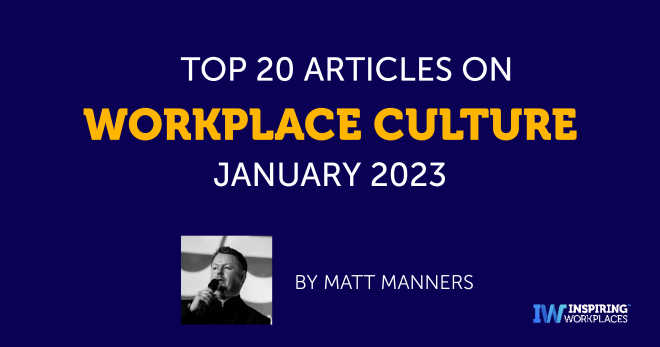
25th January 2024
Workplace Health Benefits Fall Short in Enhancing Employee Happiness and Well-being, Except for One Case

A recent study from the UK suggests that workplace mental health benefits, including virtual therapy and mindfulness programs, often fail to improve employee well-being significantly. Analyzing data from over 46,000 workers across 230 companies, the study found that most interventions did not positively impact employee well-being, except for volunteering, which had a positive correlation. Experts argue that standard well-being programs may be too simplistic, and more intentional innovation is needed to address the complexities of workplace culture and employee stressors. Workers prioritize structural changes such as limiting work outside of typical hours and implementing a 4-day workweek as key well-being policies. Building a mentally healthy workplace requires innovative care models tailored to individual and workplace needs.
From the article written by Alexa Mikhail (based on research by William Fleming, PhD) and published in Fortune Well:
From virtual therapy to time management classes and mindfulness programs, workplaces are hoping their commitment to well-being pays off in the long run with a happier, healthier cohort of workers.
However, in an assessment of 90-workplace interventions to improve well-being, William Fleming, PhD, a researcher at the Wellbeing Research Centre at the University of Oxford, found the success rates are murky.
“Across multiple subjective well-being indicators, participants appear no better off,” Fleming concludes in his paper published in the Industrial Relations Journal this month. Fleming also notes in his paper that at least half of employers in the UK have official well-being strategies. Workplace well-being, broadly defined, refers to how positive an employee feels in their job, which inevitably influences their sense of purpose, belonging, and productivity.
The study, which analyzed data from 46,336 workers across over 230 companies, found nearly all interventions, including resilience training, access to sleep apps, and online coaching, did not benefit employee well-being. There was one notable exception, however: Volunteering did positively correlate with improved workplace well-being.
Previous research has found conservative benefits in individualistic workplace mental health interventions, and Fleming aimed to understand how workers who partake in these benefits fair compared to those who opt-out. As more people seek inclusive workplaces that support work-life balance, interventions are timely. However, standard well-being programming may be too simple of a solution, and experts say employers are missing the mark on how they can thoughtfully improve well-being.
The ‘mental health buffet’ is not working
Ariela Safira, founder and CEO of Real, a mental wellness platform that has expanded to address workforce needs, agrees with Fleming’s conclusions. “It’s the very reason why we set out to build an entirely new care model in the first place,” she says. Despite attention on diminishing mental health within the workplace and beyond, more benefits without intention don’t solve the problem, Safira says.
“When it comes to mental health, mental illness has been skyrocketing and yet, as an industry, we have barely skimmed the surface in terms of creating new forms of care to meet the need,” Safira says. “As a result, people have been continuing to struggle, regardless of how many mental health benefits their employer offers them. This is hurting individuals and it’s hurting workplaces.”
Dr. Richard Safeer, the chief medical director of employee health and well-being at Johns Hopkins Medicine and author of A Cure for the Common Company, says well-being benefits can make a difference. However, it’s not one-size-fits-all across companies.
“It’s easy to put resources on the workplace mental health buffet, but like so many ‘all you can eat’ menus, the quality of what’s served is not usually great,” he says. “The workplace culture is complex and the expectation that simple solutions will prevail is naïve.”
While the pandemic underscored our need for human connection and community, Safeer says more intentional innovation must go into how well-being benefits and programs are developed and integrated into the culture.
“Well-being is more than a program, prize or portal. Well-being requires the compilation of an intentionally crafted well-being culture, whereby every member of the organization plays a role not only in their own well-being, but also a role in supporting those with whom they work,” says Safeer, who points to what makes a workplace psychologically safe. For example, beyond benefits, it’s about fostering “human-centered leaders.”
The well-being policies that workers want
What’s more, if systemic changes propelling burnout and stress stay intact, benefits have little effect. “Unless the stressors and barriers that eat away at employee well-being are addressed, it will be difficult for any program to overcome those negative forces,” Safeer says.
A 2023 survey from Gallup and Bentley University found the three workplace policies workers say will help their well-being relate more to the structure of working than individualistic improvements. Limiting work outside of typical hours, implementing a 4-day workweek, and incorporating mental health days topped the list for preferred well-being policies. Jennifer Moss, a workplace culture strategist, speaker author of The Burnout Epidemic, echoes this sentiment and says the root causes of poor well-being and chronic stress cannot be solved with merely workplace mindfulness guides if staff are overworked and don’t feel supported.
“When we aren’t giving people space to focus on self-care then it just ends up being another task for employees to add into their already busy days,” she says. “Instead of trying to put bandaids on broken systems, let’s transform the system instead. Instead of, ‘How do we make people more resilient to the stress we’ve caused?’ How about ‘Let’s figure out where our people are experiencing stress and eliminate that!’ instead.”
Read the full article to find out what to keep in mind when taking meaningful steps to lay the foundation for workplace wellbeing.





